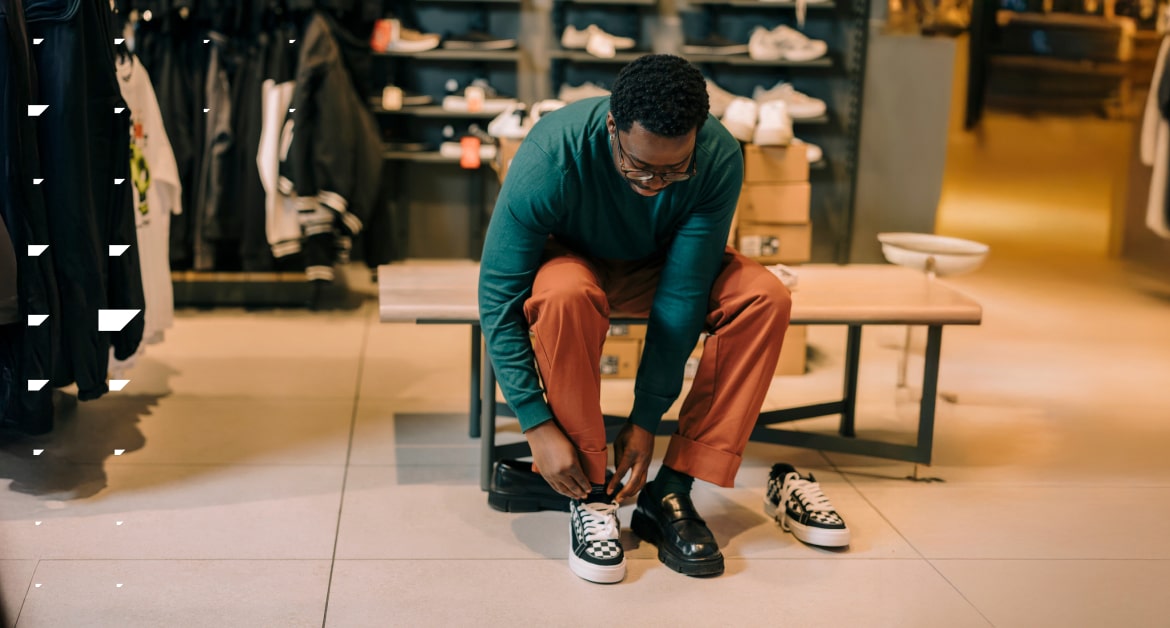The impact of COVID-19 across all commerce was severe. But one positive trend that emerged during this difficult time was growth in, specifically, e-commerce and online retail.
For many brands, this growth meant an abundance of new customers and first-time buyers. However, a growing customer base comes with inherent challenges: How do you ensure these first-time buyers become active customers? And how do you increase your share of loyal customers without heavy discounting that erodes your margins?
The answer lies in loyalty.
New customers, same challenges
When the majority of stores closed during the pandemic, it caused a radical shift. Consumers, whether they were ready or not, were forced to embrace digital.
As a result, your brand has probably experienced an increase in customer growth. With a larger pool of consumers willing to engage on digital channels because of the pandemic, any digital strategies you have in place should yield more substantial results.
But even with this increase in new customers, the challenge you face as a marketer now is the same challenge you faced pre-pandemic. You need to lead first-time buyers further along their customer journey, you need to drive repeat purchases, and you need to build trusted, loyal, and lasting relationships with customers that lead to greater CLTV.
All of that sounds reasonable, except some of the marketing efforts required to face these challenges — such as discount-based incentives — can come at the expense of profitability.
This puts you in a precarious position: You want to accelerate business outcomes for your brand without eroding margins. But it’s also likely you’re operating with a leaner marketing budget now, and we know that acquiring new customers is much more expensive than retaining customers.
Investing in a loyalty program to help retain more customers, drive repeat purchases, and increase CLTV will be less expensive than investing resources to acquire new customers. That’s why, in order to grow your brand post-pandemic, you must focus on increasing customer loyalty.
Loyalty as a strategy for better business outcomes
Yes, discounts can be a useful strategy to entice customers to make a purchase. But they come at a (literal) cost, especially when they are given to all customers, indiscriminately. Not every customer is the same, and there’s no guarantee a second, third, or even fourth purchase incentivized by a discount means you’ve truly earned a customer’s loyalty for life.
In other words, discount-driven purchases don’t guarantee an increase in CLTV.
Where discounting falls short
Gebrüder Götz, an e-commerce retailer based out of Germany, understood this when they explored opportunities in their expanded list of customers, which had been growing even before the pandemic.
In the past, the brand attempted to drive repeat purchases by offering customers cashback vouchers. When this initiative failed to deliver the results they were looking for, they tried a different incentive: 10-20% discounts. Although these incentives sparked a short-term bump in purchases, the indiscriminate use of discounts ultimately hurt the company’s margins, and didn’t do much to help them grow their base of active and loyal customers.
However, when the brand launched Emarsys Loyalty, they were able to switch to offering members points based on their purchases. Making those points available to members immediately following a purchase effectively inspired more subsequent purchases.
Once the brand went live with their new loyalty program and began using points instead of relying only on discounts, they saw a 10% increase in average cart value within the first week.
Points vs. discounts
Are points really a strong enough incentive to drive purchases compared to discounts? Gebrüder Götz decided to test this theory and compare the results.
When inviting customers to join their loyalty program, they tested two options: some customers were offered 10€ off their first purchase, and others were offered double points on their first purchase.
The brand found that, although the 10€ voucher created higher conversions overall, points were still a powerful incentive when it came to converting first-time buyers and driving loyalty membership.
Points also have an added benefit in that they don’t drastically damage your margins, and theyactually work better long-term to foster brand loyalty. This is crucial since points are only a fraction of the cost of discount vouchers (and in the case of Gebrüder Götz, only ¼ the cost).
Strategic discounting as a short-term strategy
Discounting will always remain one of the strongest incentives you can use as a marketer, especially when offered to customers selectively, particularly to members of your loyalty program. However, they must be used strategically.
For example, if you need to rapidly clear out stock, use discounts. They’ll get the job done. But note that this should only be considered as an extreme measure, because even though they can yield quick revenue results, it comes at a significant cost in terms of margins.
Another risk with discounts: When they are given indiscriminately, you inadvertently train customers to expect and wait for discounts. This reinforces undesired shopping behaviors that hurt your brand over time.
Gebrüder Götz found success with strategic use of discounts. They offered discount vouchers to customers, but only if those customers became members of the loyalty program. The conversation was similar to what they were achieving with an indiscriminate discount, but these customers-turned-members were more loyal shoppers in the long run.
“As a brand, we needed to drive repeat purchases and convert more first-time customers. Although we could do that with indiscriminate discounting, we knew a loyalty program would be a better strategy. But the idea of a loyalty program is sometimes intimidating. With Emarsys, we actually had a really quick and easy implementation. We got our customer data into one place, which really helped give us better visibility of our customers. The use cases that were already built into the platform were perfect for what we needed to do as a brand. Within two months of launching Emarsys Loyalty, we were able to see positive business results, and within the first week average cart value increased by 10%.”
Identifying more customers
Think about everything you do from your customer engagement platform. All the use cases you want to deploy to drive traffic to your site (and to your stores), all the communications you send to customers to increase engagement — those all start with identification. A loyalty program that offers value is one of the most effective ways to get customers to readily identify themselves.
Gebrüder Götz leveraged their loyalty program to help identify more customers online and at the store level. They were able to identify 50% of their customers just from the use of loyalty membership cards alone. And because the program is fully integrated into their customer engagement platform, they were able to identify members across all channels, online and offline.
Going forward, the brand will be able to test non-discount incentives to encourage identification via loyalty enrollment. This includes experiences like pre-sale access, members-only exclusives, and VIP customer care. These experiences make customers feel special and appreciated, securing their loyalty in a way that short-term incentives won’t.
By identifying more customers through loyalty, the brand increased their ability to deliver true 1:1 omnichannel personalized experiences.
Seamless shopping experience online and offline
When loyalty is fully integrated to your platform, it becomes value-additive to customers at every touchpoint, no matter where they are shopping. This ensures the online experiences and in-store experiences you provide will be completely seamless for your customers.
Gebrüder Götz exemplifies this by having the Emarsys Loyalty Wallet integrated into the brand’s website and in-store clienteling app. This allows their customers to access and redeem loyalty rewards in-store just as easily as they can on the website. The result is an omnichannel experience for the customer, and consistent engagement from the brand.
Did you know that customers who are part of a loyalty program can generate up to 18% more revenue per year for the brand?
Final Thoughts
Although COVID-19 has presented new obstacles to marketers, some challenges remain the same: You must be able to encourage repeat purchases while protecting margins, increase customer lifetime value, and grow your base of loyal customers in order to accelerate business outcomes for your brand.
A fully integrated loyalty program is the most effective way to achieve this goal. Loyalty is essential now, as your business begins to recover and adjust post-pandemic, and it will continue to be essential — perhaps more so — as we move deeper into the unknown “new normal.”
Handpicked Related Content:













